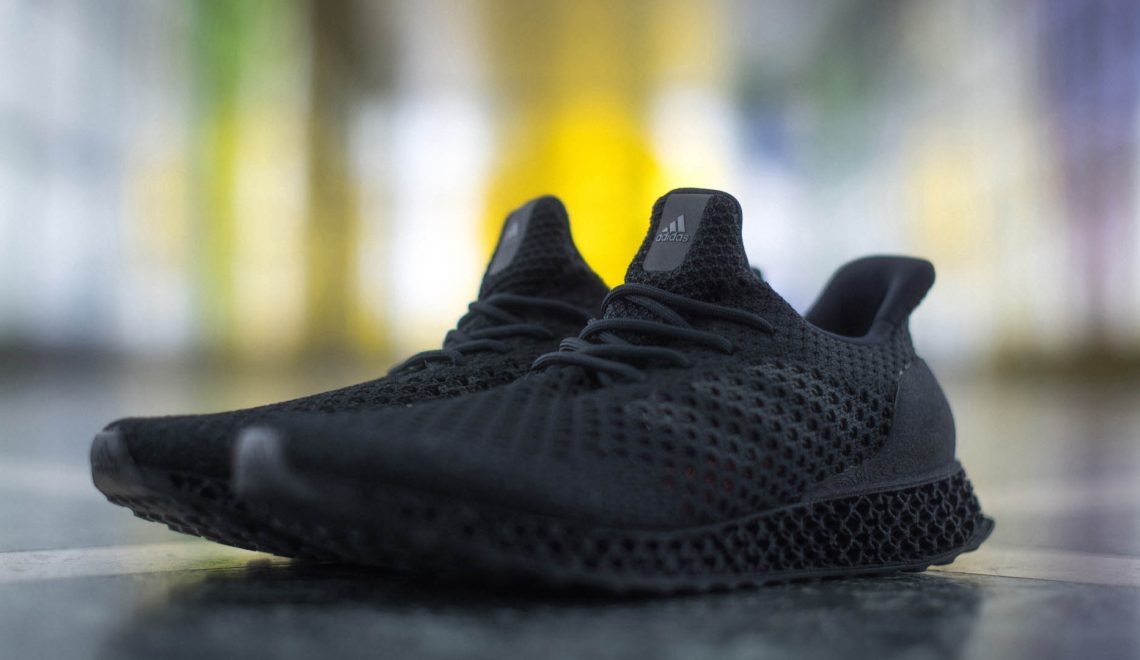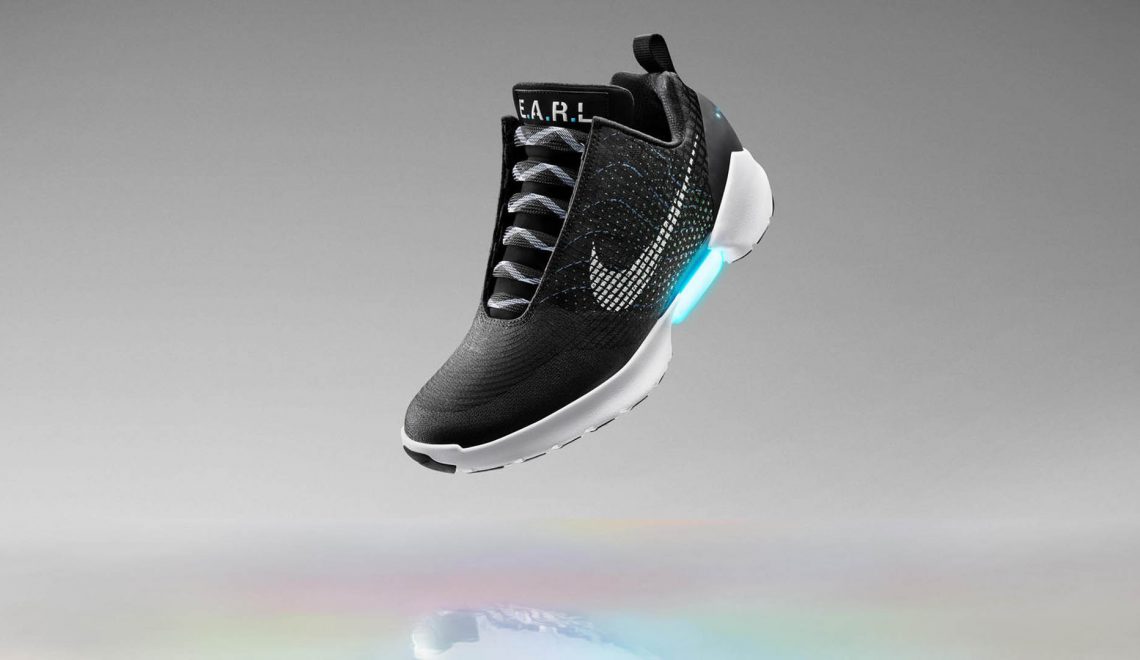Like flying cars and space hotels, we haven’t quite reached the “not so distant” future promised by fashion tech. LED laden dresses are far from the norm and we don’t yet have self fitting clothes. But that doesn’t mean fashion tech isn’t producing some incredible new ideas that have the potential to shift their industry. Even better, you can own some of these spectacular products today! Check out our list of the most exciting new fashion tech products that you can actually buy!
LikeAGlove Connected Leggings
One of our current new obsessions is LikeAGlove. The Lululemon-like spandex pants are embedded with wires that sense every curve and measurement from your hips down. A small Bluetooth module on the waist sends the info to a companion app on your mobile device. The app then matches you with the perfect pair of jeans, presenting a list of denim from 18 companies, rating each style from 1 to 5 based on how well they fit your body. You are shown details on the fit match and are provided with your size and a link to purchase the jeans. We tried it and, like magic, perfect fitting jeans showed up at our door. The jeans were purchased sight-unseen from a brand we don’t normally wear. Amazing. Right now they are only for women and are one size fits most (LikeAGlove states size 0 – 20). Jeans are one of those garments that can make you feel horrible about yourself when you are squeezing into them in a dressing room. LikeAGlove eliminates that; you end up with jeans that almost feel custom made without even leaving your apartment.
If this is the future of what online shopping could be, please hurry up future! Oh, and let us know when you have a version for swimsuit shopping!
LikeAGlove.me
$79.99
Snapchat Spectacles
Ok, so they might not win you any fashion awards, but Snapchat’s first foray into fashion tech has proven to be a huge hit. Snapchat had the ingenious idea of selling the glasses via vending machines that randomly pop up around the country. People are lining up for hours just buy them. But what exactly are they? Imagine if someone glued a small camera to the outer corner of the frames of a pair of plastic sunglasses; that is basically the Spectacles. And the camera is only designed for one thing: 10 seconds of video for Snapchat. It features a 119 degree lens designed to mimic the way our eyes see the world around us and connects via Bluetooth / WiFi to the Snapchat app. The battery is able to record up to 16 minutes of video between charges, which amounts to a hefty 96 10-sec clips.
If you are looking to secure a pair, Snapchat has launched a website so that you can find their pop-up vending machine as it moves across the US. Alternatively, the company has launched a pop-up store in NYC on East 59th between 5th Ave and Madison. The pop-up store will be open until Dec 31, 2016.
Honestly, we don’t really know what to make of the Snapchat Spectacles, but there is no arguing the demand. If you have a Millennial or heavy snapchat-er in your life, they most likely have been lusting over a pair. Looking at the bigger picture, the Spectacles are important because they are the first tech-ladened glasses to find an audience. They have proven people are open to the idea of having a camera and technology integrated into their eyewear. It will be interesting to see if other companies can continue this trend or if Spectacles are a one-hit-wonder.
Snapbot Vending Machines (locations vary) & NYC Pop-up Store (until Dec 31st)
$130
Narvik Jacket With ThermalTech Fabric
Being cold sucks. Everyone has tried different ways to make their jackets warmer: down, synthetic materials, reflective materials, electric heaters, and even infrared heaters. These solutions all work to some degree but there is still a lot of room for improvement. ThermalTech believes it has cracked the code by using the most effective and efficient heat source we know of, the sun. The company has developed a namesake fabric that uses light from the sun to heat an integrated mid-layer by 18 degrees Fahrenheit in under two minutes. ThermalTech is a specially coated 100% stainless steel mesh smart fabric that is flexible, durable, and even washable. No sun around, no problem; the mesh fabric reacts similarly to your body’s infrared heat. To keep you from overheating, the fabric knows when to release excess heat. Pretty incredible and it has us coveting one for our next ski trip!
Smart fabrics are an emerging segment within fashion tech. We have tried Ministry Of Supply’s temperature regulating shirts before and were extremely impressive. The use of smart fabrics to tackle the cold is a great idea and it sounds like ThermalTech is on the right path.
Narvik
$212.50 – $263.50 (men’s and women’s available in 3 different styles)
Nike HyperAdapt 1.0
For the nearly 30 years since the release of Back To The Future 2, Nike has been flooded with requests to make the film’s self lacing Nike Mag a reality. About a decade ago, Nike took those requests to heart and began the process of figuring out how do you make a pair of sneakers automatically fit your foot. The first pair of shoes from this effort launched a few weeks ago. Named HyperAdapt 1.0, the sneakers are the spiritual successor to the original fictional Mag. Simply push your feet into the sneakers and it comes to life; LEDs on the upper and midsole light up and the shoe automatically tightens around your foot. A small button along the top of the shoe allows you to make adjustments to the fit. Best of all, Nike isn’t just making 100 of these; they are producing as many as they can to sell. So far the sneaker has launched in several major cities in Black and Grey colorways. A white version is expected as the shoes undergo a wider rollout over the coming weeks. The HyperAdapt 1.0 is being sold only via reservations, which can be made from inside the Nike+ mobile app (it is not obvious – you have to go to Services -> Book An Event). If you are able to get a coveted reservation slot, the sneakers aren’t cheap; they sell for $720. But that is a small price to feel like Marty McFly did in the far off future of 2015, right?
While there is a novelty element to the HyperAdapt 1.0 (it has been compared to the Reebok Pump), the technology actually has a lot of merit. First, there are a lot of people with disabilities or illnesses that prevent them from tying a pair of shoes. Nike had already released a zip-close sneaker in an attempt to address those needs and this is the next logical step. Second, Nike has stated that the next generation of the shoe should be fully adaptive. This means that the footwear will continuously monitor its fit, and make adjustments throughout the day (similar to Belty). As we run a race or even just stand/walk throughout the day, our feet tend to swell. The next version of the sneaker will recognize that and slightly lighten or loosen the laces accordingly. Looking further into the future, Nike hopes to make the shoe even more adaptable, automatically customizing everything from arch support to the cushioning of the midsole.
Nike+ App (iOS / Android)
$720 (Black, Grey, and White)
3D Printed Sneakers

3D printing is finally starting to come into its own. Thanks to the rapid development of new materials and printing technology, 3D printed shoes are finally a reality. In 2016 the first sneakers with a printed midsole hit retail. New Balance, Under Armour, and Adidas all joined they fray and released limited edition footwear. The three companies are using a similar latticework design that provides structure and comfort. Despite being expensive, rare, and highly collectable, the companies want users to put the sneakers through the paces; run in them, workout in them, and use them as your daily footwear. The brands are working to not only determine interest, but also testing long term, real world durability. Unfortunately the releases are so limited, that unless you luck out in scoring a pair you have to resort to buying through a reseller to get your hands on them. Hopefully we will see wider releases in the coming months.
Besides being exciting from a technology perspective, there is a lot be love about 3D printed shoes. All 3 manufacturers view their printed sneakers as performance footwear. They have played close attention to cushioning and pronation so that if you wanted to, you could go out and run a marathon in the shoes. But the shoes are significantly lighter than their traditional counterparts thanks to the lattice midsole. Additionally, from a manufacturing standpoint, the shoes are much better for the environment. 3D printed shoes produce almost zero waste; exactly what is needed is created, no more, no less. The manufactured foam midsoles used today are reported to be extremely toxic to the earth. Between the chemicals needed to produce the midsoles, manufacturing waste, and factory emissions (30lbs of carbon dioxide are produced to make 1 pair of Asics Gel Kayanos), footwear companies always rank among the worst polluters in the garment industry (one of the most environmentally damaging industries). 400 3D printed sneakers is a long ways from replacing the 25 billion shoes made per year, but we are getting there.
Under Armour UA Architech
New Balance Zante Generate
Adidas 3D Runner
$750 – $5000 (via resellers)









